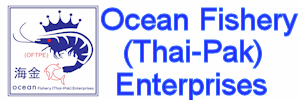Fishery is a key component of the Philippine primary sector
–
agriculture, fishing and forestry. About one million people or five
percent of the country’s labor force depend on fishery for
livelihood. It contributed an average of 4% to gross domestic
product and 19% to gross value added in agriculture, fishing and
forestry. The Philippine Tuna is a major industry that accounts
about 12% of total fish production. It is an important component of
the national economy, generating more than 120,000 jobs and US$280
million in annual exports. The total landings in the Philippines
exceed 400,000 metric tons annually. The Philippines ranks second in
world tuna catches, and fifth among
canned tuna producers.
Western and Central
Pacific Fisheries Commission - Commission for the
Conservation and Management of Highly Migratory Fish Stocks in
the Western and Central Pacific Ocean
Fishery and Aquaculture Country Profile for Philippines
- aquatic species caught by country or area, by species items, by
FAO major fishing areas, and year, for all commercial, industrial,
recreational and subsistence purposes. The harvest from mariculture,
aquaculture and other kinds of fish farming is also included.
Bureau of
Fisheries & Aquatic Resources Philippines - The Bureau of
Fisheries and Aquatic Resources (BFAR) is the government agency
responsible for the development, improvement, management and
conservation of the country's fisheries and aquatic resources. It
was reconstituted as a line bureau by virtue of Republic Act No.
8550 (Philippine Fisheries Code of 1998). The bureau is under the
Department of Agriculture. This site includes fisheries legislation
and catch statistics.
Philippine
Fisheries Development Authority (PFDA) - Includes agriculture
and fisheries statistics information for Philippines. Export
products information and incentives.
The Southern Philippines Boat Owners and Tuna Association (SPBOTA)
is composed of five (5) large commercial fishing companies that are
operating super seiner fishing vessels (above 250 gross ton carrying
capacity). It consists about 18 purse seine set. One purse seine set
is composed of about seven (7) support vessels (i.e. catcher boat,
carriers, and service boats). Total vessels are 126 and manned by at
least 1,170 crewmen.
Tuna Cooperative - The primary objective of the cooperative
is to engage in the joint production and processing of tuna and
fishing products and marketing thereof, as well as generate funds
and extend credit to the members for productive and provident
purposes. It is an agricultural multi-purpose cooperative which
shall be opened to all fish producers and traders.
Tuna Canners Association General Santos (TCAGS) - It is
comprised of six (6) tuna canneries all based in General Santos
City. The 6 canneries have a combined production capacity of about
700 metric tons per day.
Fresh Frozen Seafood Association - Tuna Processors
Philippines, Inc. (FFSA-TPPI) pioneered the production of sashimi
quality frozen tuna that is processed with so-called "filtered smoke
technology". It strategically positions itself in the global trading
environment, thus still maintaining the lead in producing premium
quality tuna products.
The South Cotabato Purse Seiners Association (SOCOPA) is
consists of 41 fishing companies that operate group purse seine
fishing vessels (carrying capacity is about 20 to 150 gross tons).
This group has at least 160 purse seine sets or 1,120 vessels and
manned by approximately 10,500 crewmen.
Network of
Aquaculture Centres in Asia-Pacific (NACA) - NACA is an
intergovernmental organisation that promotes rural development
through sustainable aquaculture. NACA seeks to improve rural income,
increase food production and foreign exchange earnings and to
diversify farm production. The ultimate beneficiaries of NACA
activities are farmers and rural communities. Current member
governments are Australia, Bangladesh, Cambodia, China, Hong Kong
SAR, India, Indonesia, I.R. Iran, Korea (DPR), Lao PDR, Malaysia,
Maldives, Myanmar, Nepal, Pakistan, Philippines, Sri Lanka,
Thailand, Vietnam.
Ocean Health Index Philippines - The Ocean Health Index is a valuable tool for the
ongoing assessment of ocean health. By providing a means to advance
comprehensive ocean policy and compare future progress, the Index
can inform decisions about how to use or protect marine ecosystems.
The Index is a collaborative effort, made possible through
contributions from more than 65 scientists/ocean experts and
partnerships between organizations including the National Center for
Ecological Analysis and Synthesis, Sea Around Us, Conservation
International, National Geographic, and the New England Aquarium.
Information for Philippines




